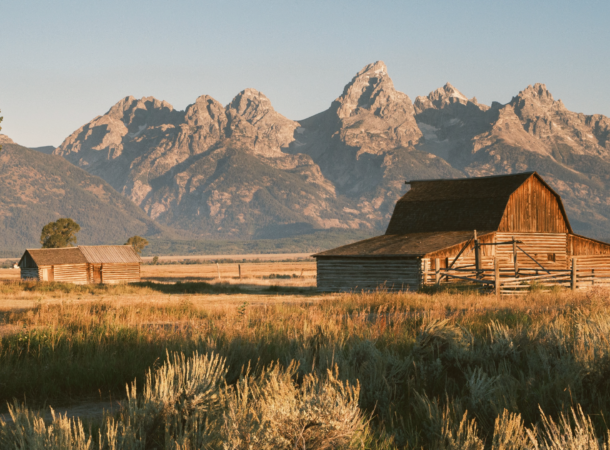
Red and Blue States in the US in 2024
Ever wondered why some states lean passionately red while others ardently embrace blue?
As political landscapes continue to shape the United States, understanding the dynamics between red and blue states has never been more crucial.
Explore the unique factors that sway voting patterns and gain a comprehensive view of the contrasting values and priorities that define the political spectrum of the US.
What Are Red States and Blue States?
Red states often align with conservative ideologies. Their core values revolve around traditionalism, individual freedoms, and limited government intervention. The rugged landscapes of the heartland and the coasts of the South and West are often colored with red, signifying an enduring loyalty to these principles.
On the other hand, blue states generally lean towards liberal principles. In these regions, diversity, social progress, and a call for greater government involvement resonate strongly. The metropolises of the East and West coasts are where the blue color dominates, epitomizing a commitment to progress and inclusion.
Beyond the surface, the divide between red and blue states runs deep, rooted in historical narratives, cultural norms, and regional experiences. It is the complex interplay of these factors that paints our political landscape with the contrasting hues we witness today.
Despite their dissimilarities, these colors don’t merely clash but blend together at times, forming intricate shades of purple in swing states, where political battles are often won or lost. These pivotal territories hold the power to sway the tides of national elections, making them both unpredictable and captivating in the theater of politics.
Thus, as we explore the enthralling world of red and blue states, we uncover not just contrasting views, but also an array of ideas that shape the course of American governance.
Red or Blue: Republican and Democratic States
State | Red or Blue State | Democrat Votes | Republican Votes |
Alabama | Red | 36.6% | 62% |
Alaska | Red | 42.8% | 52.8% |
Arizona | Swing State | 49.4% | 49.1% |
Arkansas | Red | 34.8% | 62.4% |
California | Blue | 63.5% | 34.3% |
Colorado | Blue | 55.4% | 41.9% |
Connecticut | Blue | 59.3% | 39.2% |
Delaware | Blue | 58.7% | 39.8% |
District of Columbia | Blue | 92.1% | 5.4% |
Florida | Swing State | 47.9% | 51.2% |
Georgia | Swing State | 49.5% | 49.2% |
Hawaii | Blue | 63.7% | 34.3% |
Idaho | Red | 33.1% | 63.8% |
Illinois | Blue | 57.5% | 40.6% |
Indiana | Red | 41% | 57% |
Iowa | Red | 44.9% | 53.1% |
Kansas | Red | 41.6% | 56.2% |
Kentucky | Red | 36.2% | 62.1% |
Louisiana | Red | 39.9% | 58.5% |
Maine | Blue | 53.1% | 44% |
Maryland | Blue | 65.4% | 32.2% |
Massachusetts | Blue | 65.6% | 32.1% |
Michigan | Swing State | 50.6% | 47.8% |
Minnesota | Swing State | 52.4% | 45.3% |
Mississippi | Red | 41.1% | 57.6% |
Missouri | Red | 41.4% | 56.8% |
Montana | Red | 40.5% | 56.9% |
Nebraska | Red | 39.2% | 58.2% |
Nevada | Swing State | 50.1% | 47.7% |
New Hampshire | Blue | 52.7% | 45.4% |
New Jersey | Blue | 57.3% | 41.4% |
New Mexico | Blue | 54.3% | 43.5% |
New York | Blue | 60.9% | 37.8% |
North Carolina | Swing State | 48.6% | 49.9% |
North Dakota | Red | 31.8% | 65.1% |
Ohio | Swing State | 45.2% | 53.3% |
Oklahoma | Red | 32.3% | 65.4% |
Oregon | Blue | 56.5% | 40.4% |
Pennsylvania | Swing State | 50% | 48.8% |
Rhode Island | Blue | 59.4% | 38.6% |
South Carolina | Red | 43.4% | 55.1% |
South Dakota | Red | 35.6% | 61.8% |
Tennessee | Red | 37.5% | 60.7% |
Texas | Red | 46.5% | 52.1% |
Utah | Red | 37.6% | 58.1% |
Vermont | Blue | 66.1% | 30.7% |
Virginia | Blue | 54.1% | 44% |
Washington | Blue | 58% | 38.8% |
West Virginia | Red | 29.7% | 68.6% |
Wisconsin | Swing State | 49.4% | 48.8% |
Wyoming | Red | 26.6% | 69.9% |
Historical Roots and Regional Factors
The political variety in the US finds its roots in a rich historical narrative that stretches back to the nation’s founding. From the dawn of the Republic, political ideologies began to take shape, planting the seeds of what would eventually grow into the red and blue state distinction we know today.
In the early years, the deep divide between Federalists and Anti-Federalists laid the groundwork for the enduring tension between central authority and state sovereignty. As the years passed, the rift evolved, culminating in the era of the Civil War, where ideological differences led to the stark geographic distinction between red and blue states that persists to this day.
The tumultuous 20th century saw major shifts in party alignments, with the Democratic Party embracing progressive ideals and the Republican Party aligning with conservative values. The winds of change blew, turning some states from solid blue to crimson red and vice versa, as they grappled with the ebb and flow of national ideologies.
In addition to the historical roots, the regional composition of states plays a pivotal role in shaping their political colors. The urban-rural divide stands as one of the most significant regional factors impacting voting patterns, with cities often leaning blue while rural areas tend to favor red.
Distinct regional traditions and cultural norms add further shades to this mosaic. The West’s rugged individualism contrasts with the hospitality of the South, while the progressive spirit of the Northeast diverges from the more conservative Midwest. As these regional identities interlace, they give rise to the varied and captivating hues that paint the electoral map.
Moreover, demographic diversity further influences regional dynamics, with immigrant populations often gravitating towards blue states, seeking inclusivity and opportunities, while red states may draw in conservative communities seeking traditional values.
Red and Blue States: Conclusion
In American politics, red and blue states represent diverse beliefs and values, painting a clear picture of the nation’s democratic journey.
Swing states, on the other hand, play another crucial role, influencing electoral outcomes and adding unpredictability. The ever-shifting political landscape reflects the dynamism of the American spirit.
Amidst these colors lies the celebration of democracy’s resilience and the promise of progress: the mosaic of red and blue states highlights the power of diverse voices.
Frequently Asked Questions
What determines red and blue states?
Red and blue states are determined by the voting patterns of their residents in presidential elections. States that consistently vote for Republican candidates are considered red states, while those consistently voting for Democratic candidates are labeled blue states.
When did concepts of color blue and color red come out in America?
The red or blue color-coding for political parties in the United States gained popularity in the 2000 presidential election. Media outlets began consistently using red to represent Republican states and blue for Democratic states.
What do Republicans believe in?
Republicans generally believe in limited government intervention, individual freedoms, lower taxes, a strong national defense, and traditional family values. They emphasize personal responsibility and free-market economic policies.
What do Republicans think about foreign policy?
Republicans often prioritize a strong military, national security, and assertive foreign policy. They advocate for robust defense spending and are typically more inclined towards interventionism in global affairs.
What do liberals believe?
Liberals, or Democrats, believe in a more active role for the government in addressing social and economic issues. They advocate for progressive policies, social equality, healthcare reform, environmental protection, and support for the disadvantaged.
What is the concept of conservatism?
Conservatism is a political philosophy that values tradition, individual liberty, and limited government. It emphasizes preserving established institutions and resisting rapid societal changes.
What is the difference between a liberal and a conservative?
The main difference between liberals and conservatives lies in their approach to governance. Liberals generally advocate for more government involvement to address social and economic issues, while conservatives prioritize limited government intervention and emphasize individual liberties and personal responsibility.
How does the concept of red or blue impact presidential elections?
Presidential elections are significantly influenced by the concept of red and blue states. Candidates focus their campaign strategies on states with swing status (competitive states) that could go either red or blue. Winning enough red and blue states is crucial to securing the majority of electoral votes required for the presidency. As for the political party that red or blue states opt for, blue states predominantly vote for the democratic candidate whereas the red states vote for the republican candidate in the presidential elections.
How do electoral votes relate to red and blue states?
Electoral votes represent each state's influence in the presidential election. The number of electoral votes a state has is determined by its representation in Congress. Red or blue states' electoral votes are critical in determining the final outcome of the presidential race.
How did the 2020 election impact red states and blue states?
In the 2020 election, some democratic states that were traditionally red, such as Georgia and Arizona, flipped to blue, reflecting changing demographics and political sentiments. Likewise, blue states like Michigan and Wisconsin remained in the Democratic column, contributing to President Joe Biden's victory over Donald Trump.
How do political parties strategize in red or blue states during elections?
Political parties strategically allocate campaign resources in red or blue states. Republicans invest in red states to maintain support, while Democrats focus on blue states to solidify their base. They also target swing states, where the competition is tight, to secure crucial electoral votes.
How do red states differ from blue states in terms of policy priorities?
Red states often prioritize issues like gun rights, lower taxes, and limited government regulation. Blue states, on the other hand, place emphasis on environmental protection, social justice, and expanding healthcare access.
What is the role of red and blue states in shaping national policy decisions?
Republican and democratic states play a significant role in shaping national policy decisions. Their varying ideologies and priorities influence the broader political landscape and impact policy debates at the national level. The political leanings of red and blue states also influence the composition of Congress, affecting the legislative agenda.
What impact did Donald Trump have on red states in the 2016 and 2020 elections?
Donald Trump's candidacy energized voters in many red states during the 2016 and 2020 elections. His unorthodox approach and populist messaging resonated with conservative voters, contributing to his victories in several traditionally Republican states.
What impact did Joe Biden have on blue states in the 2020 election?
Joe Biden's campaign focused on retaining support in blue states while also seeking to expand Democratic influence in swing states. His emphasis on healthcare, climate change, and unity appealed to voters in blue states, contributing to his successful election bid.
Why are Republicans red and Democrats blue?
This color association dates back to the 2000 election, though earlier, in 1976, NBC's election map used red for Democratic states and blue for Republican states, drawing inspiration from Britain's political color scheme. Various media outlets had their own color codes based on different reasons. The current convention was solidified in 2000 when The New York Times and USA Today used red for Republicans, partly because "red" and "Republican" both start with 'r'. This distinction has since become standard.





